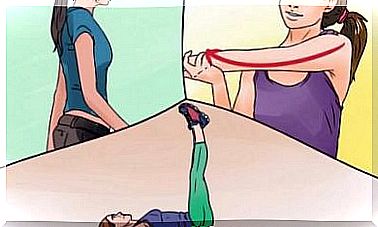Change Of School: How Can I Help My Child?
Changing schools is not easy for children. You need some time to adapt to the new situation and to be comfortable. But you can help your child!

The first day at a new school makes most children nervous and anxious, regardless of their age. The adaptation phase usually takes a few months until the child is used to the new environment, the new teachers and classmates. When a change of school is imminent, your child needs understanding and support most of all.
The parents can, however, prepare their child accordingly and support it so that it loses its anxiety and can also see advantages in the new situation. We have some tips for you.
Changing schools: why do children experiment with fear and nervousness?

Regardless of age , children tend to feel anxious and nervous when we talk about changes of this kind. It’s not easy to understand what exactly is going on inside them, but your empathy is especially helpful right now.
A new school means a new beginning for the little ones (and also for older children). The following factors cause fear and nervousness:
- The unknown: everything is new and the child doesn’t know what they’re going to find or how things work.
- It has no friends: In a new school, the child has no friends, but everyone else already knows each other. They have to find their way around in a new group, so it’s normal for them to be scared of it.
- Loss of old friends: Changing schools also leaves friends behind. The child is afraid of losing her, of being forgotten, and of never seeing her again.
You have to take into account that the length of the adjustment phase is different for each child. Small children tend to find it easier than older ones, but this also depends on their personality. Shy children obviously need longer. You should therefore be patient with your child!
Changing schools: this is how you can help your child
You are probably a bit nervous and tense yourself because of the upcoming changes, but you should always stay calm and in control. Remember that parents are a mirror to their child and should therefore set a particularly good example.
The following recommendations can help you to support your child in this difficult situation:
Before changing schools

- Do not inform your child about the change of school until you are sure of the change. You shouldn’t talk about options with your offspring, as this will only cause stress. Do not let your child know until you are absolutely sure.
- Explain the reasons to your child. Your child needs to understand why it is necessary to change schools. Be patient and answer all questions.
- Give your child important information. Explain when the new school will start, what school hours it will be, how the school works, and any other details your child should know to ease their anxiety.
- Be empathetic. This is a difficult phase for your child. Try to understand it and don’t lose your temper. Your child now needs understanding, love, and support.
- Go to school with your child. You can attend the new school with your child even before the start of lessons (or the change of school). Find out if this is possible.
- Use extracurricular activities. If the school has extracurricular activities, it can be a good idea to enroll your child. Pick an activity that he likes to make it easier for him to make new friends. It won’t feel so strange then.
The first school day

- Wake up your child lovingly. Have a leisurely breakfast with him and try to calm him down.
- Accompany your child to the new school. No matter how old your child is, they now need your support to face the new teachers and classmates. You are his pillar!
- Listen to your child: you want them to feel that you understand their fears and insecurities. You should be available to your child when they want to get rid of their grief.
- Be punctual. You should bring your child to school on time and pick them up again on time.
- If your child is crying (when they are young), reassure them that everything will be fine. You can’t take it home with you, however!
- Watch your child. Some children do not tell everything they experienced in school, including any problems they might have. You may not be able to express your feelings properly. You should therefore watch your child to identify possible changes in behavior or personality.
During the adjustment phase

- Don’t forget that your child will need time to adjust to the new situation. How long it takes for this is very different. So take a deep breath and don’t forget to help him during this time.
- Don’t lose patience if your child doesn’t want to go to the new school. Customizing is not easy. Listen to your child, accompany them and do not stress them out by reproaching or scolding them.
- Contact parents of students in the same class. Ask your child which classmates they think they like and talk to their parents. Maybe you can invite these kids to play or to eat to break the ice.
- Listen carefully! You want your child to be able to express themselves, try to understand them and not give them a moral sermon. Everyone deals with changes differently and takes different amounts of time to adapt.
The process of adapting to a new school can be long and complex. It depends on the characteristics of the child and the circumstances. You should therefore be particularly empathetic and support your child.









